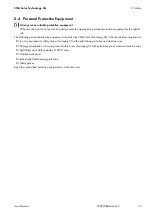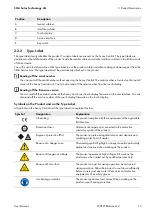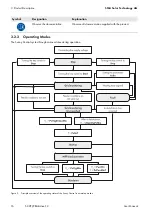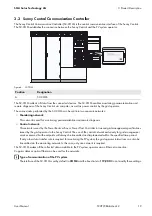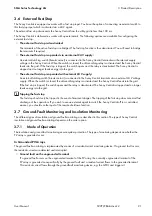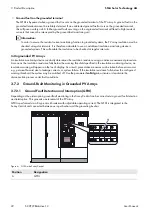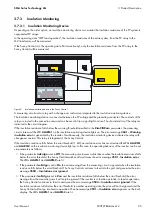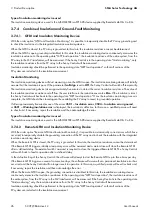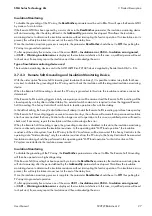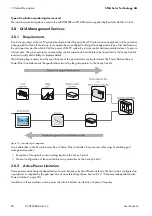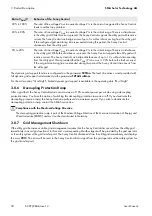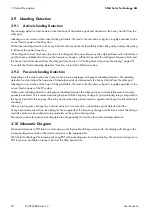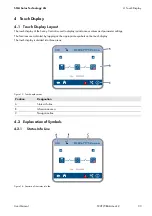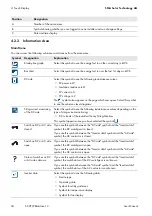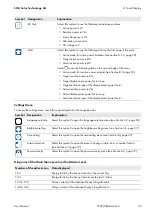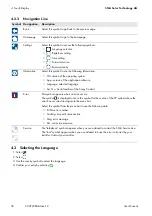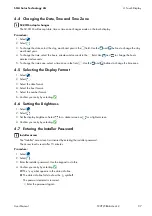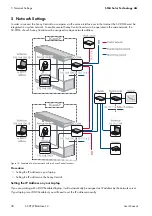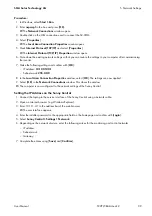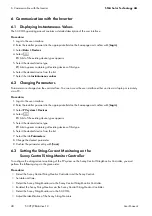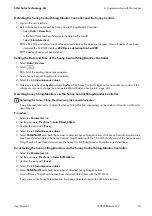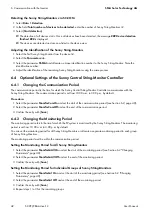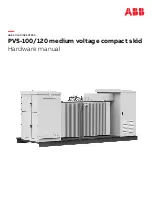
SMA Solar Technology AG
3 Product Description
User Manual
SCCP-JP-BA-A4-en-12
27
Insulation Monitoring
To disable the grounding of the PV array, the
RemMntSvc
parameter must be set to
On
. This will open the Remote GFDI
by means of a motor drive.
If the Remote GFDI has been opened by a motor drive via the
RemMntSvc
parameter, the insulation monitoring device
will start measuring after the delay defined in the
IsoMeasDly
parameter has elapsed. This allows the insulation
monitoring device to determine the insulation resistance without interrupting the feed-in operation. If an insulation error is
present, this will only be taken into account at the end of the delay time.
Once the insulation monitoring process is complete, the parameter
RemMntSvc
should be set to
Off
, thus putting the
PV array into grounded operation.
If, after approximately five minutes, one of the errors
3501 ‒ Insulation error
,
3504 ‒ Insulation error ignored
,
or
3601 ‒ Warning insulation error
is displayed, the insulation is defective. In this case, a qualified person will need
to check and, if necessary, repair the insulation and then acknowledge the error.
Type of insulation monitoring device used
The insulation monitoring device used is the A-ISOMETER iso-PV1685 device supplied by Bender GmbH & Co. KG.
3.7.4.3 Remote Soft Grounding and Insulation Monitoring Device
With the order option "Remote Soft Grounding and Insulation Monitoring", it is possible to detect any faults that have
occurred, to disable the grounding of the PV array and to check the insulation with the integrated insulation monitoring
device.
When the Remote Soft Grounding is closed, the PV array is grounded. In this state, the insulation resistance cannot be
determined.
If the Remote Soft Grounding triggers, initially a temporary error will be assumed and the Remote Soft Grounding will be
closed again by a relay after a defined delay. No external switch command is required to close the triggered Remote
Soft Grounding. The Sunny Central will switch back to feed-in operation after a defined delay.
In the default setting, the Sunny Central software will attempt to start the Remote Soft Grounding up to three times per day.
If the Remote Soft Grounding triggers on several consecutive days, the software will assume that a permanent insulation
error has occurred and the Sunny Central will no longer revert to operation. In this case, a qualified person will need to
check and, if necessary, repair the insulation and then acknowledge the error.
When the Remote Soft Grounding is open, the grounding connection is disabled. In this state, the insulation monitoring
device continuously measures the insulation resistance. In the operating state "MPP load operation", the insulation
resistance of the entire system, from the PV array to the MV transformer, will be measured. If the Sunny Central is in the
operating state "Grid monitoring", only the insulation resistance from the PV array to the Sunny Central will be measured.
Insulation monitoring should be performed in the operating state "MPP load operation" so that all sections of the
PV system are included in the insulation measurement.
Insulation Monitoring
To disable the grounding of the PV array, the
RemMntSvc
parameter must be set to
On
. The Remote Soft Grounding
will then be opened via a high-voltage relay.
If the Remote Soft Grounding has been opened by relay via the
RemMntSvc
parameter, the insulation monitoring device
will start measuring after the period defined by the
IsoMeasDly
parameter has elapsed. This allows the insulation
monitoring device to determine the insulation resistance without interrupting the feed-in operation. If an insulation error is
present, this will only be taken into account at the end of the delay time.
Once the insulation monitoring process is complete, the parameter
RemMntSvc
should be set to
Off
, thus putting the
PV array into grounded operation.
If, after approximately five minutes, one of the errors
3501 ‒ Insulation error
,
3504 ‒ Insulation error ignored
,
or
3601 ‒ Warning insulation error
is displayed, the insulation is defective. In this case, a qualified person will need
to check and, if necessary, repair the insulation and then acknowledge the error.

